
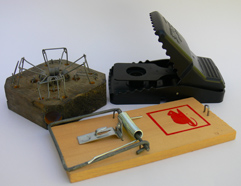
James Henry Atkinson was the British inventor who in 1897 invented the prototype classic snapping mousetrap called the “Little Nipper”. He sold his mousetrap patent in 1913 to Procter Bros Ltd UK, who still make the same trap today.
In 1899 American John Mast of Pennsylvania received a patent on a similar snap trap to Atkinson's. Mast sold his invention in 1907 to Oneida Community Ltd, New York, who then on sold the mouse trap business to Woodstream Corp. In Lititz, Pennsylvania.
Today there are more than 30 major manufactures of the snap trap, all with a slight variation. These new designs have not managed to overcome the inherit problems associated with the basic wire snap trap, such as misfires, bait steels, blood and mess and in the case of rat traps dangerous to children and non target species. Regardless of the design the system has never been perfected with most independent tests showing no more than a 50% strike rate. The snap trap although is designed to be reusable, is generally discarded due to the blood or decomposing body being stuck to the trap. This makes the snap trap a very expensive option at anything from $0.50 to $10.00 per kill.

1962 was the year paraffin bait blocks (Poison) was introduced to the market, not much has changed with a block of poison other than the concentration and type of deadly additive and attractants.
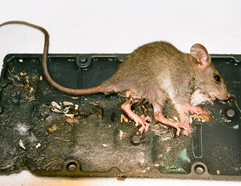
The next major development in modern day rodent control was the invention of the glue board, developed by JT Eaton Company in 1979. The glue board is currently under as much scrutiny as poison and in many western countries has been prohibited for sale. The system is expensive at over a $1.00 per kill, extremely inhumane and an environment nightmare.
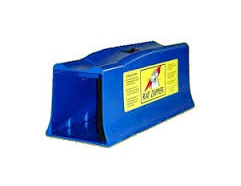
Bob Noe the founder of AgriZap Inc patented the electric mouse trap in 2000. Today there are many copies, some that work and many that don't. Electric shock products have a very limited market acceptance, they are expensive to buy and use, and work with varying results.
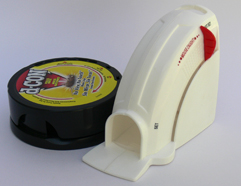
2007 saw the introduction of a new concept in mouse control, "catch, contain and dispose". Aimed at the squeamish house wife, with a no-see no-mess approach; these products are the epitome of western consumerism. The system has several pitfalls, firstly they are very expensive at an average of $3.00 a catch, they are extremely inhumane with the mouse taking up to a day to die (if at all) and finally as non-green as poison and glue boards. It is estimated that every year these types of traps add approximately 10 Olympic size swimming pools of toxic plastic to landfills around the world. The system only works for mice as rats eat or push their way out of the traps.
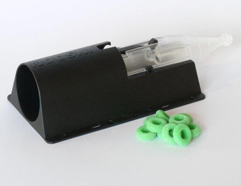
2007 David Wells and Luc Desbonnets of New Zealand release their revolutionary rat ring trap.
Without doubt the most efficient, humane killing method ever invented. The Nooski ring trap utilizes a patented method that is so unique; it can never be imitated and will always be clearly identifiable.